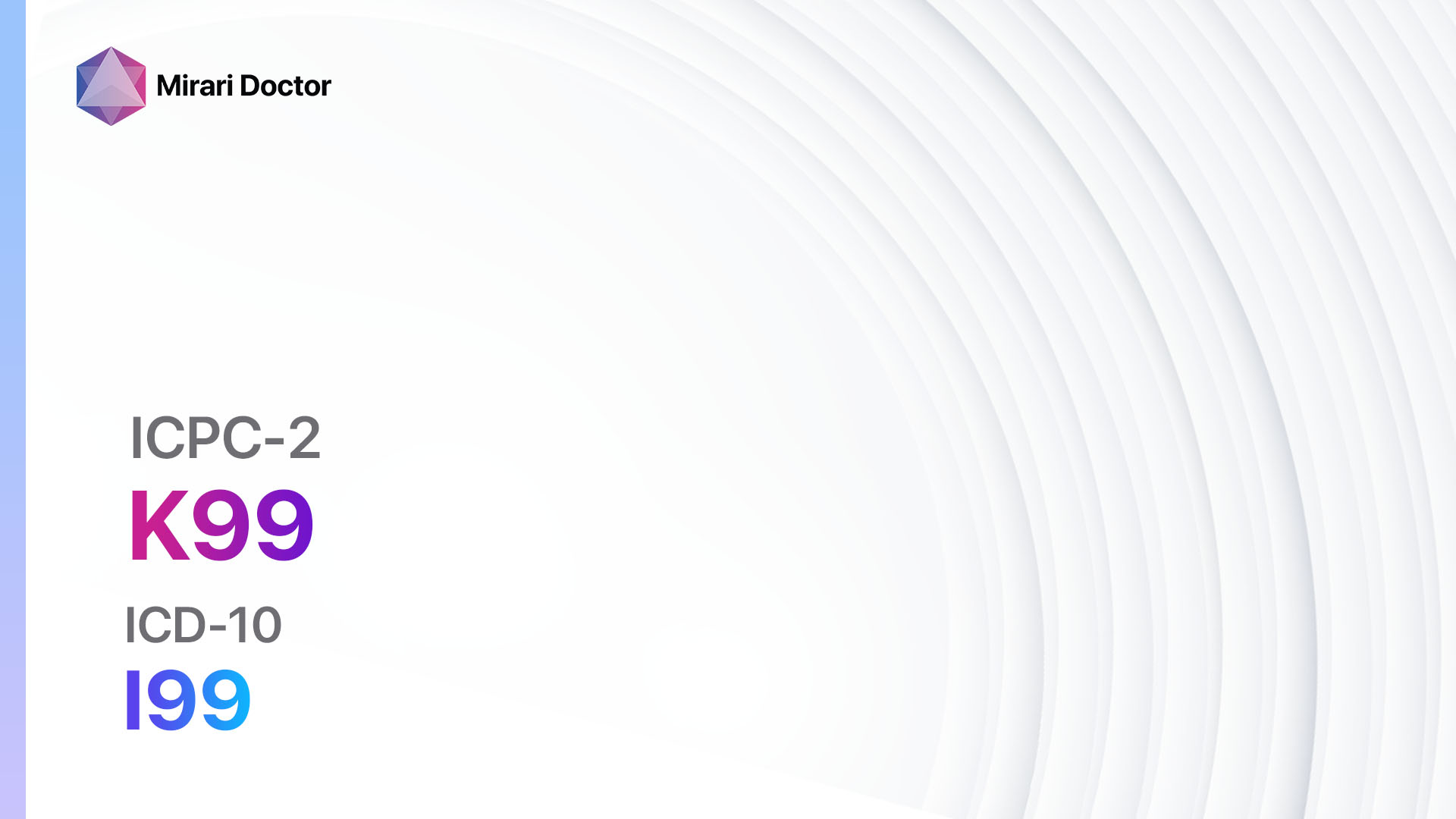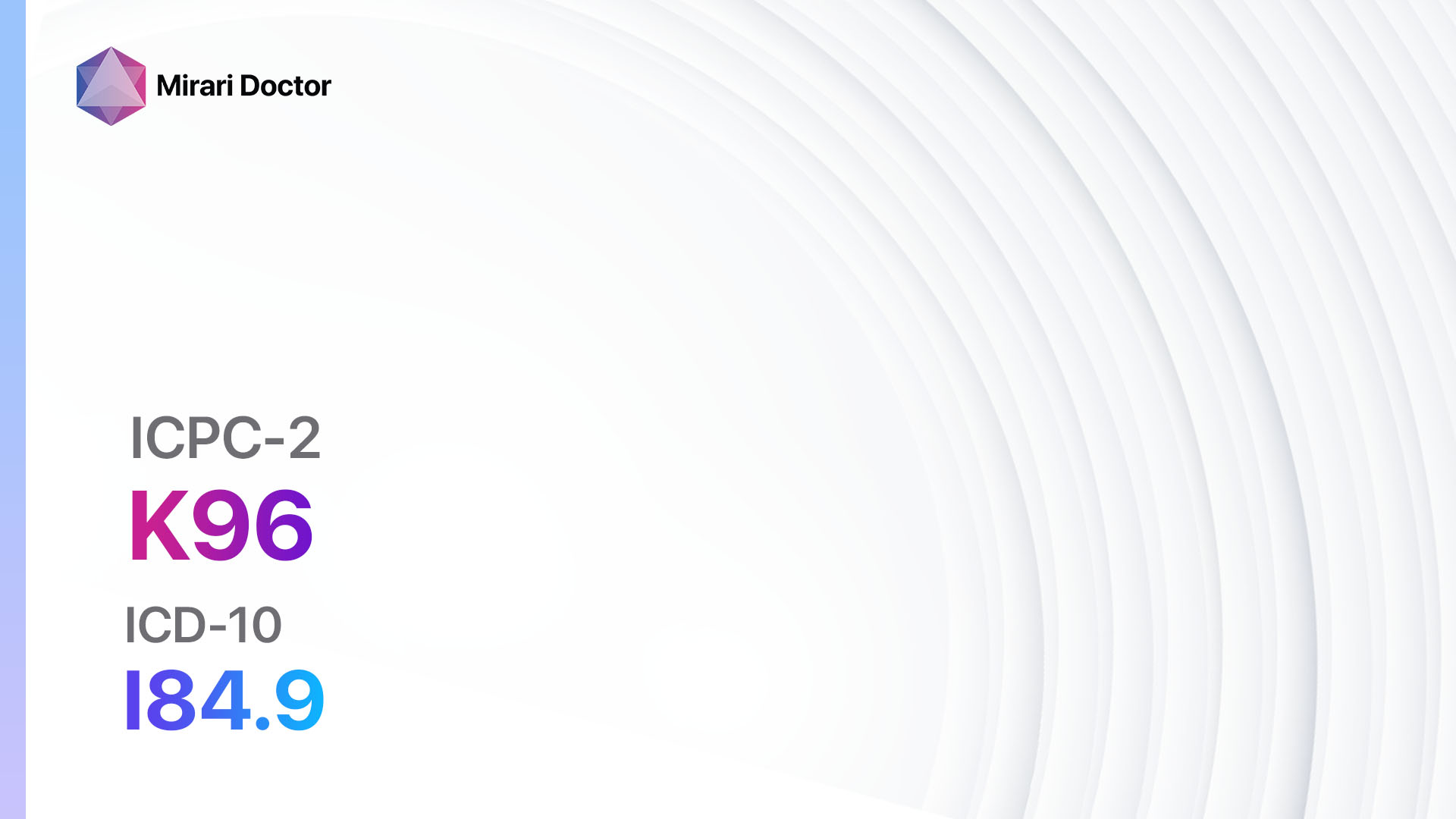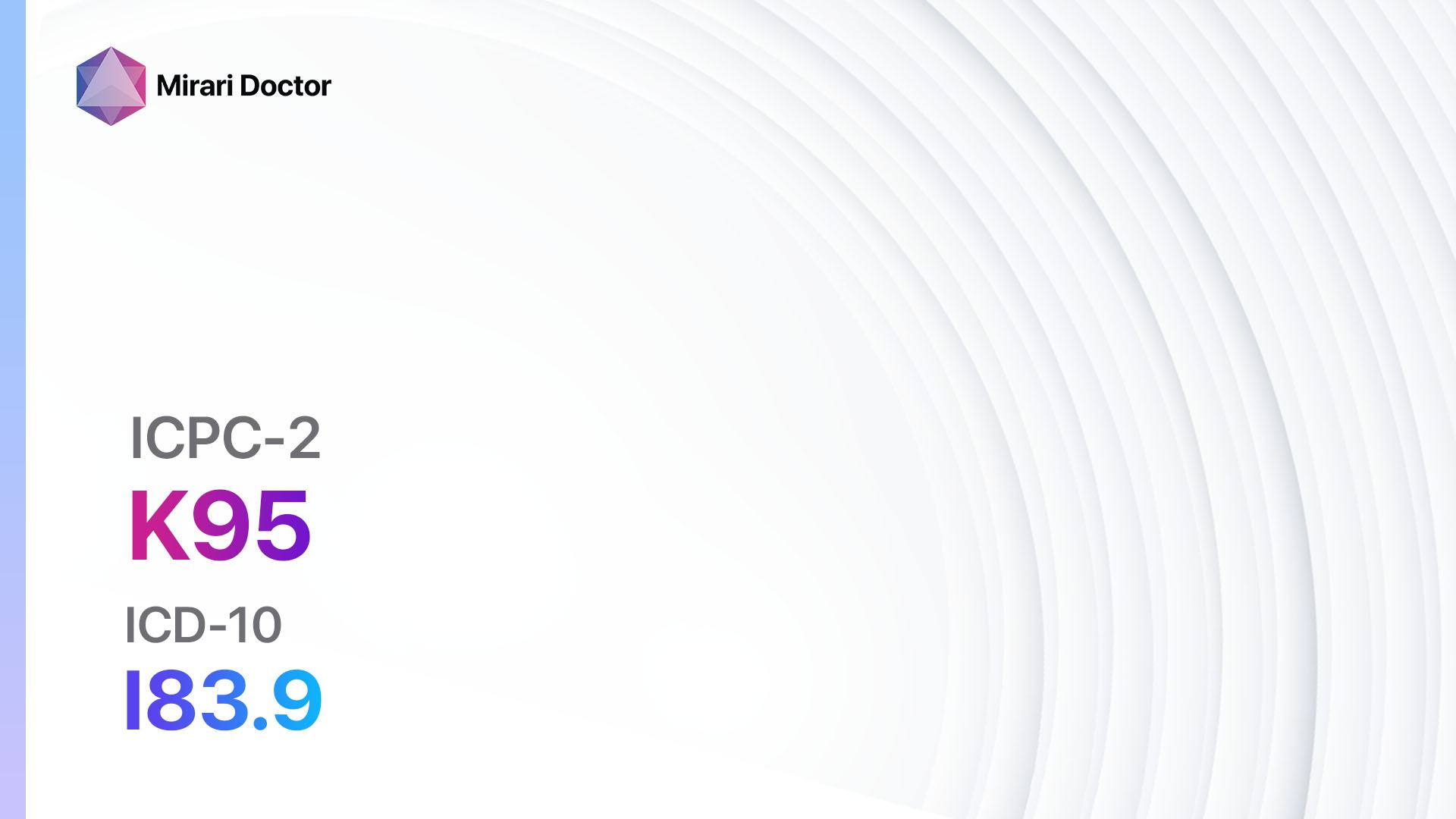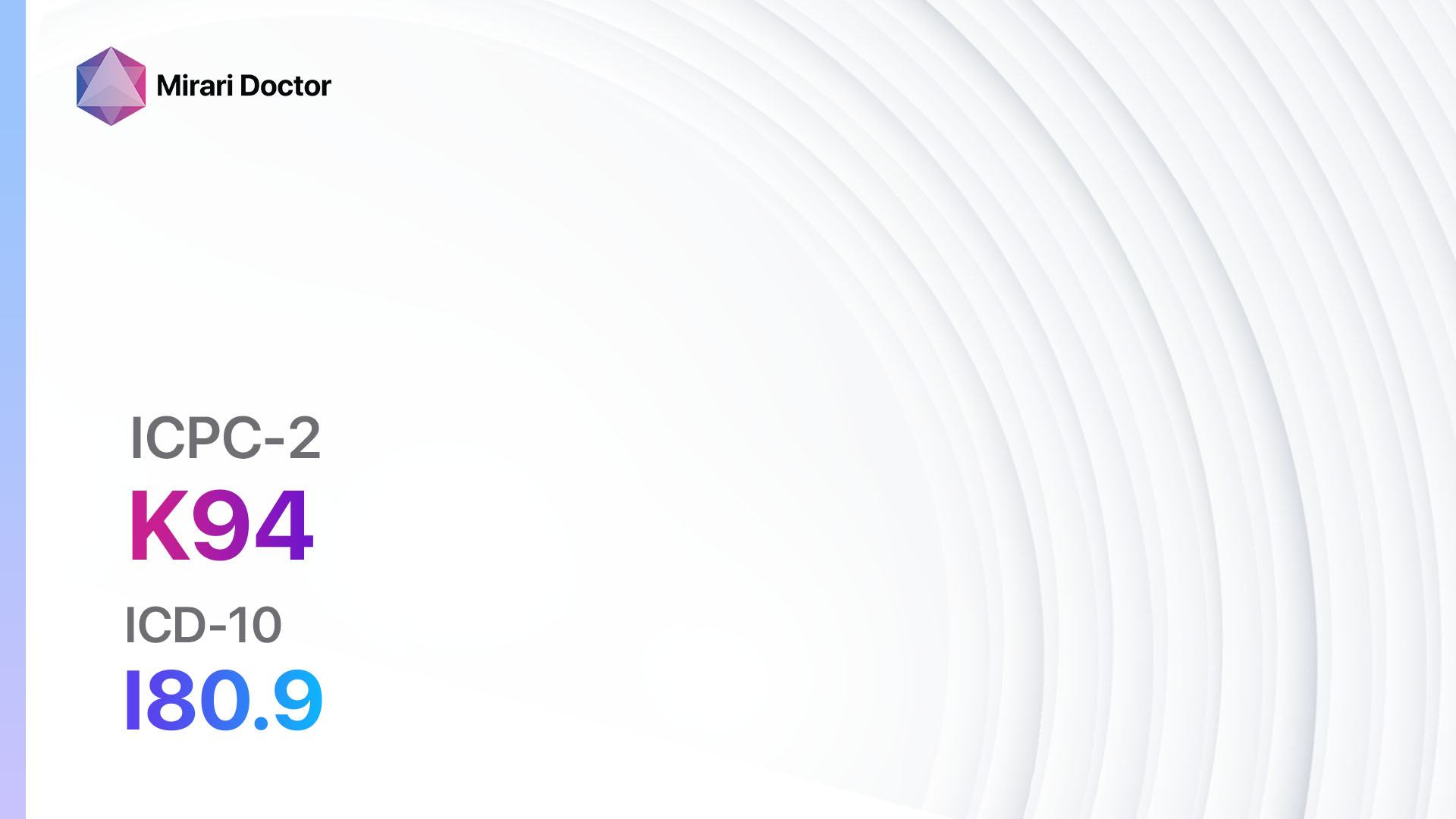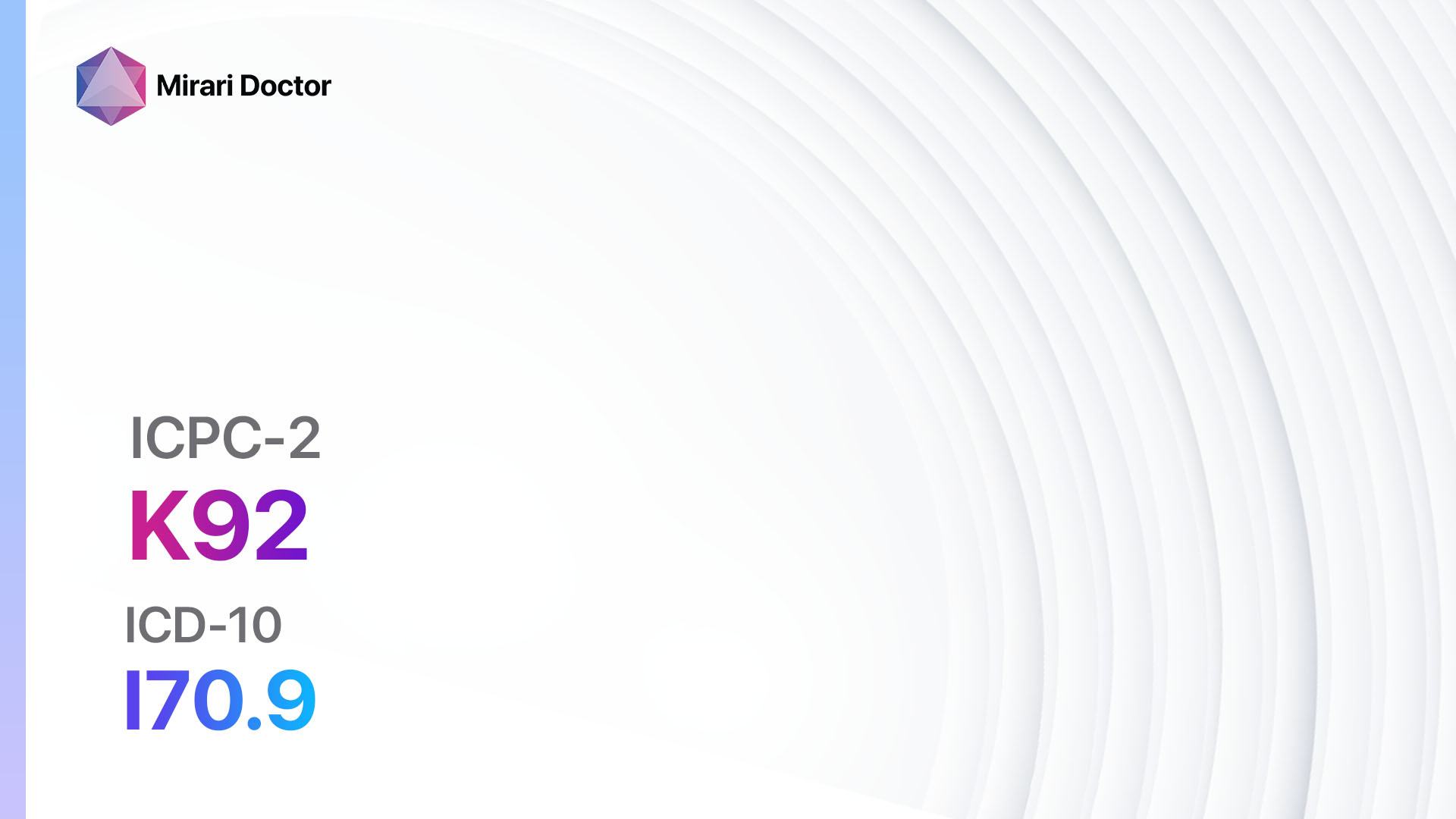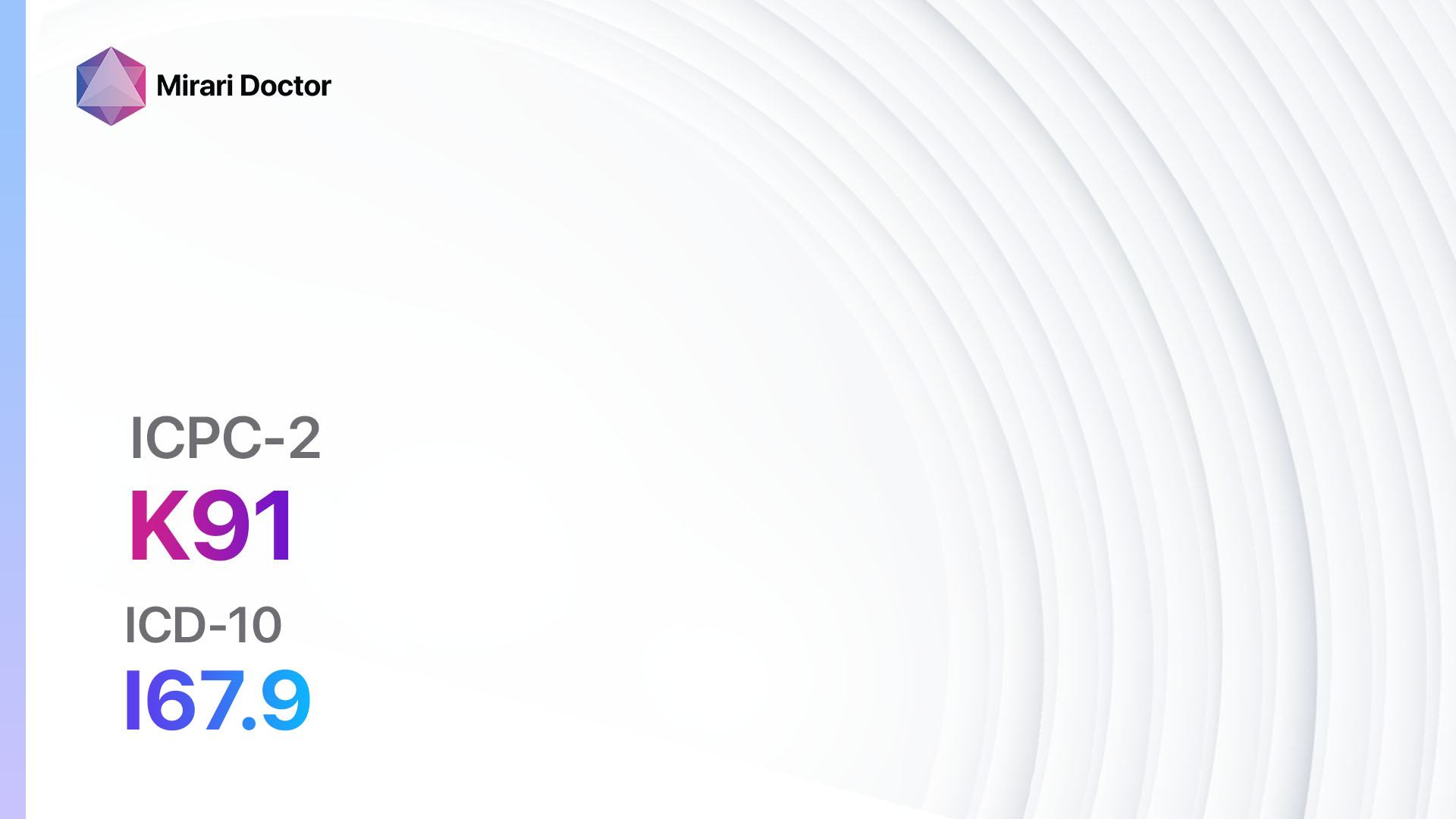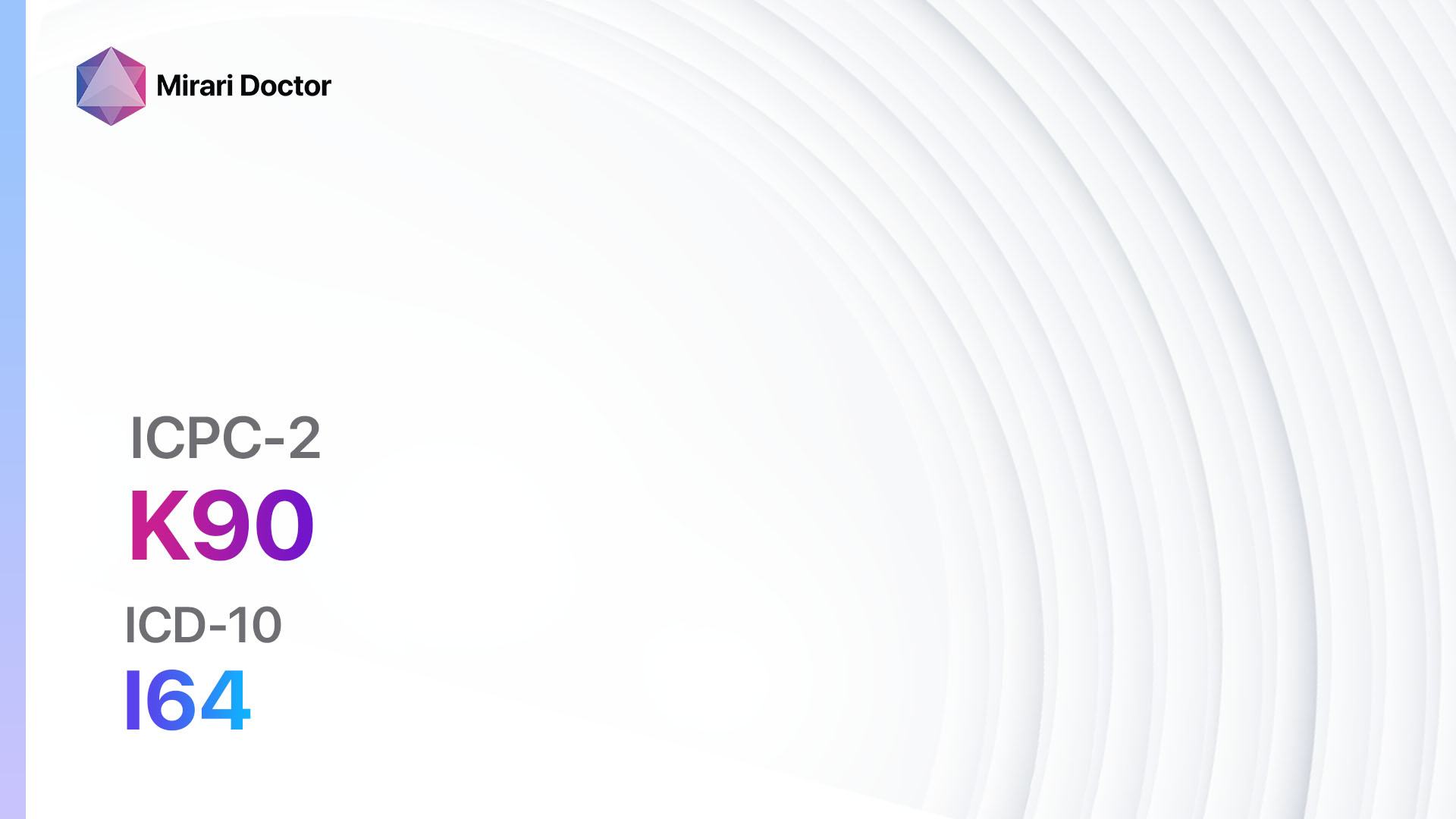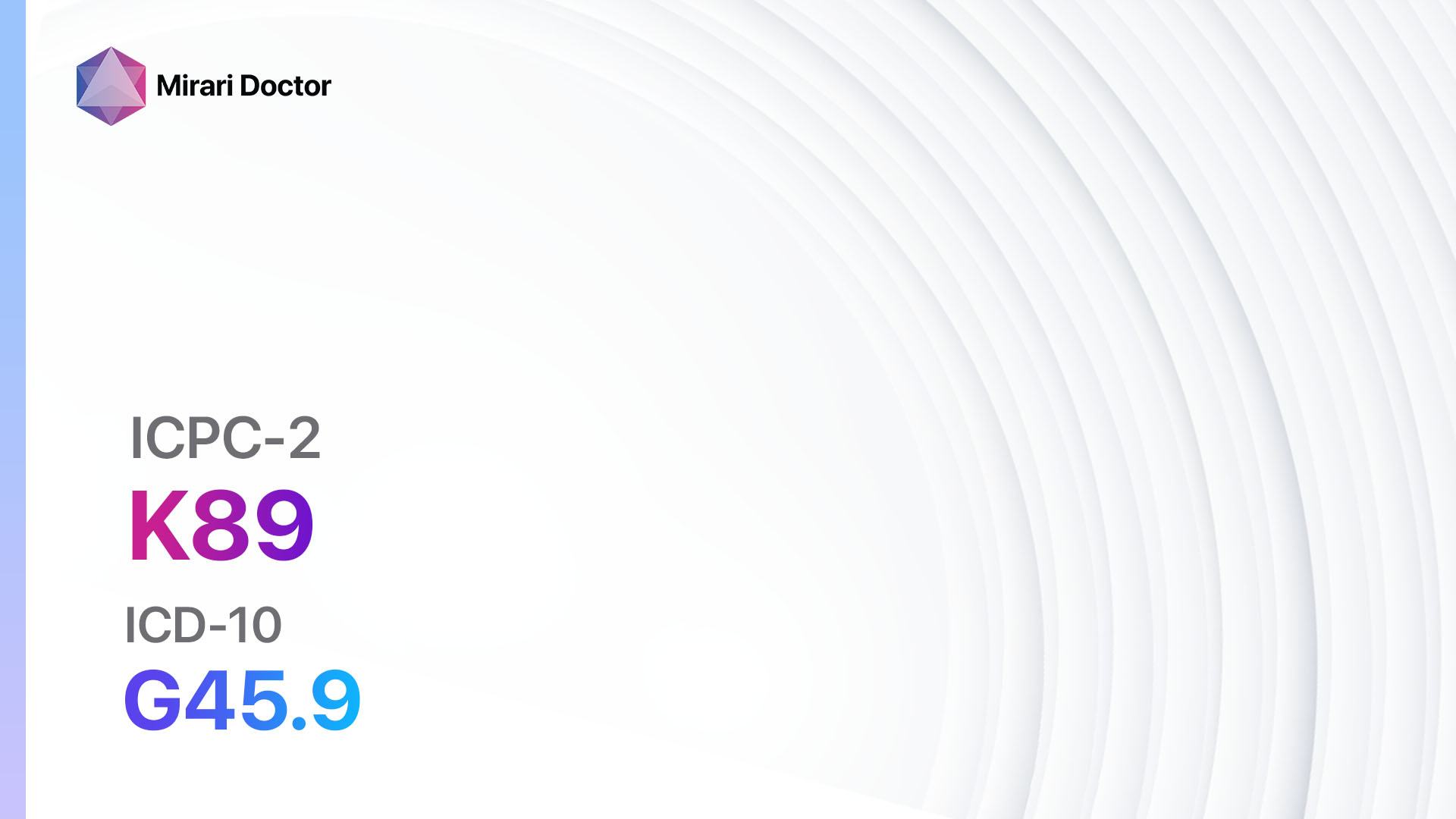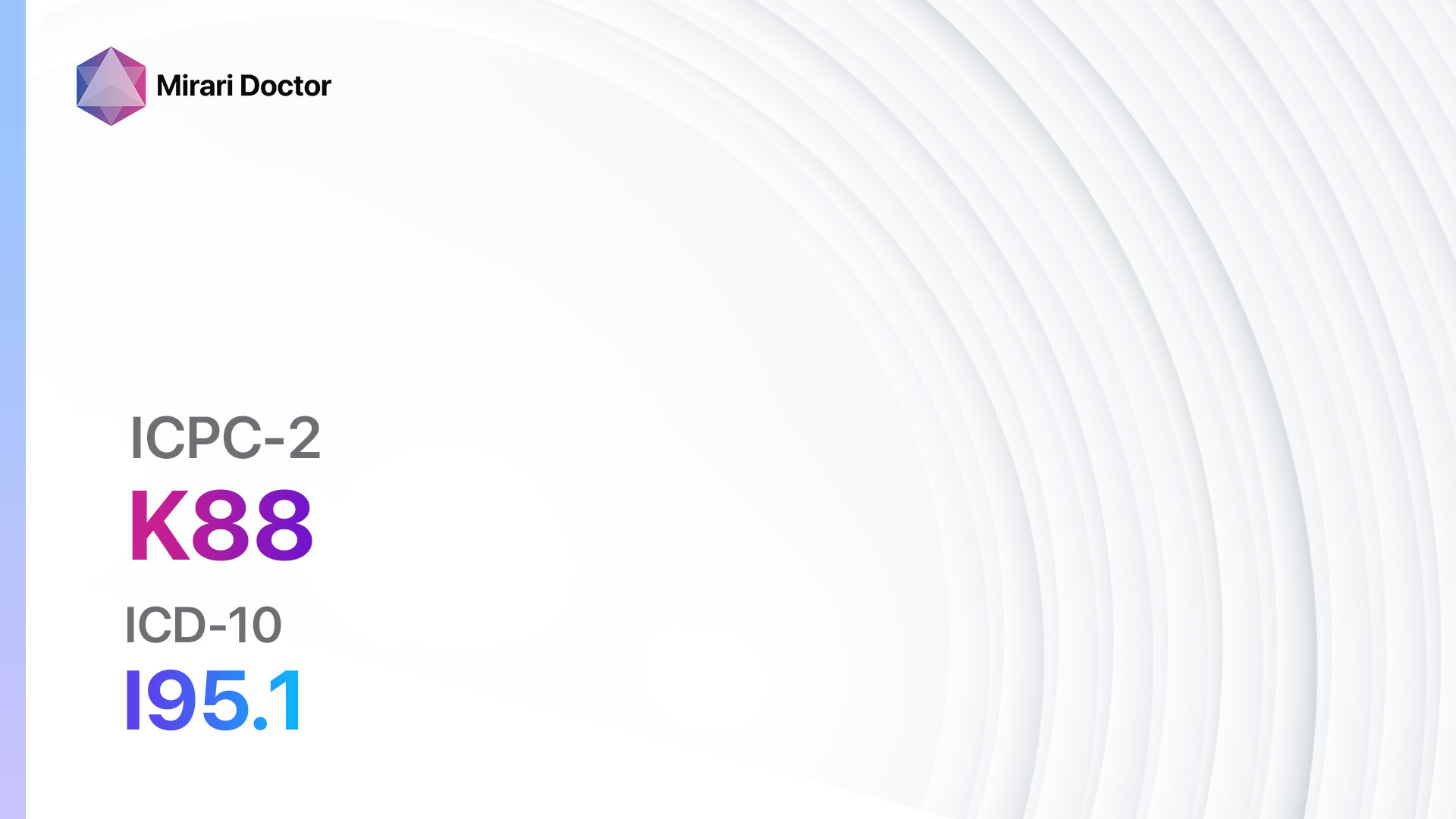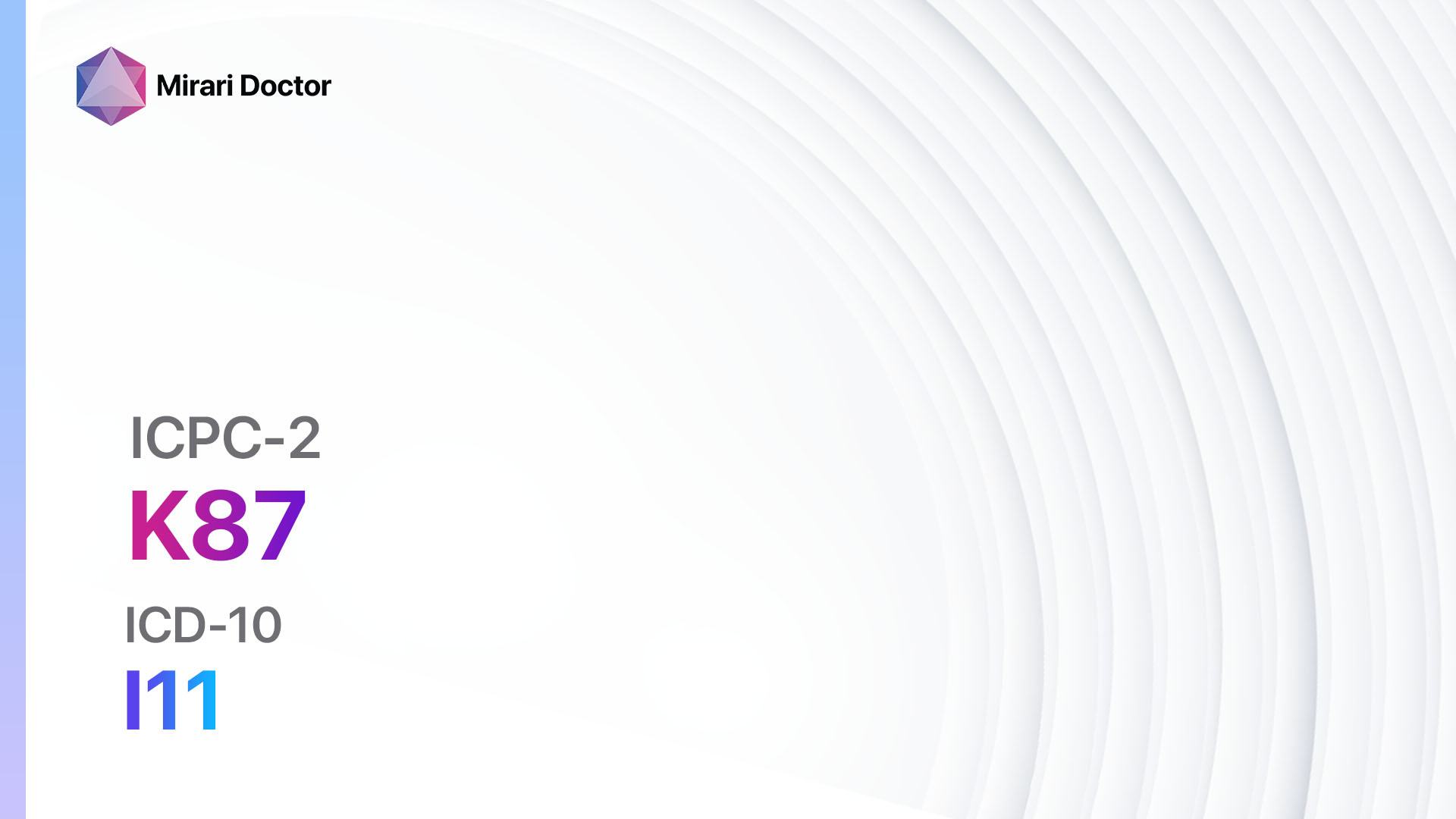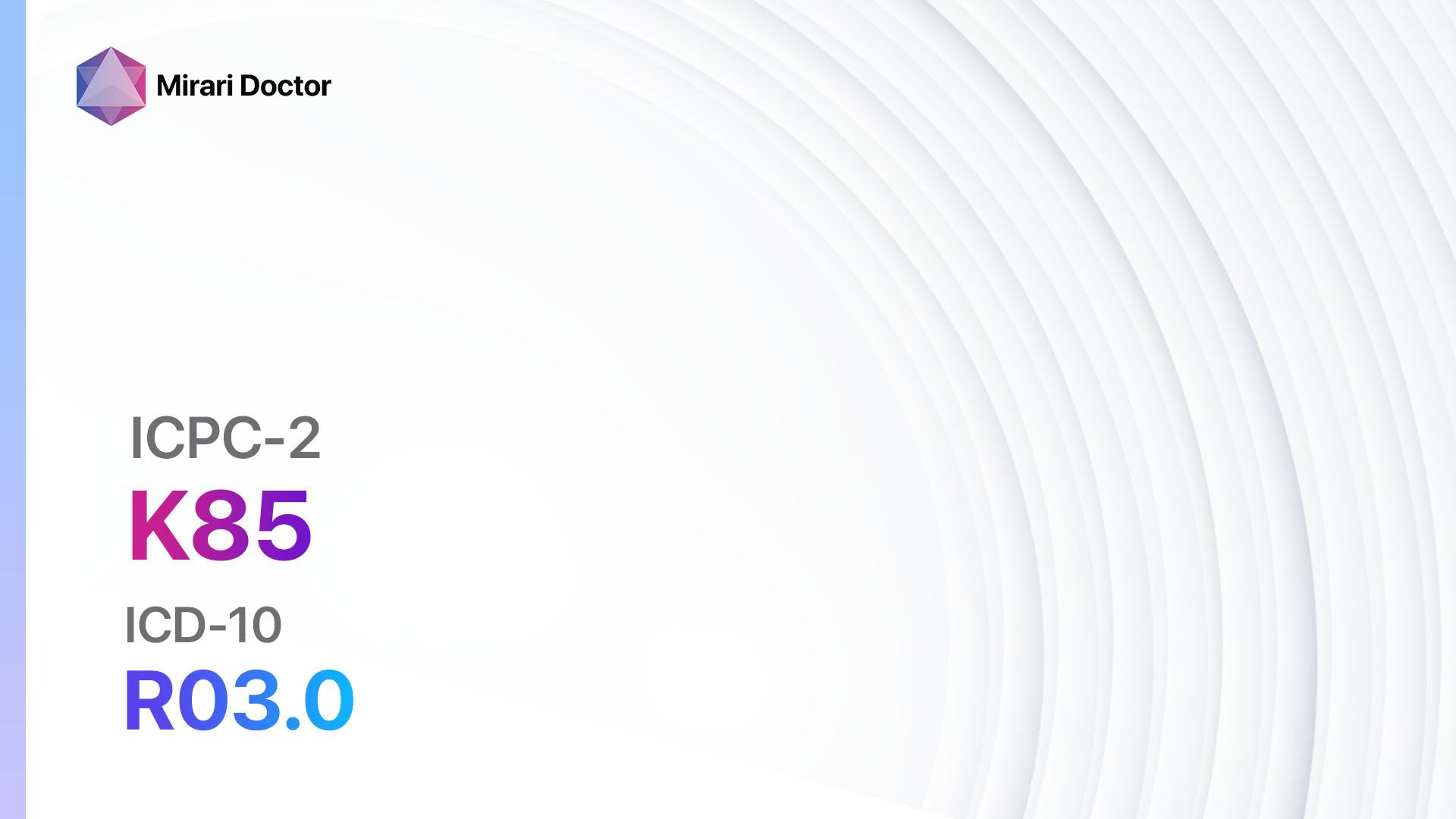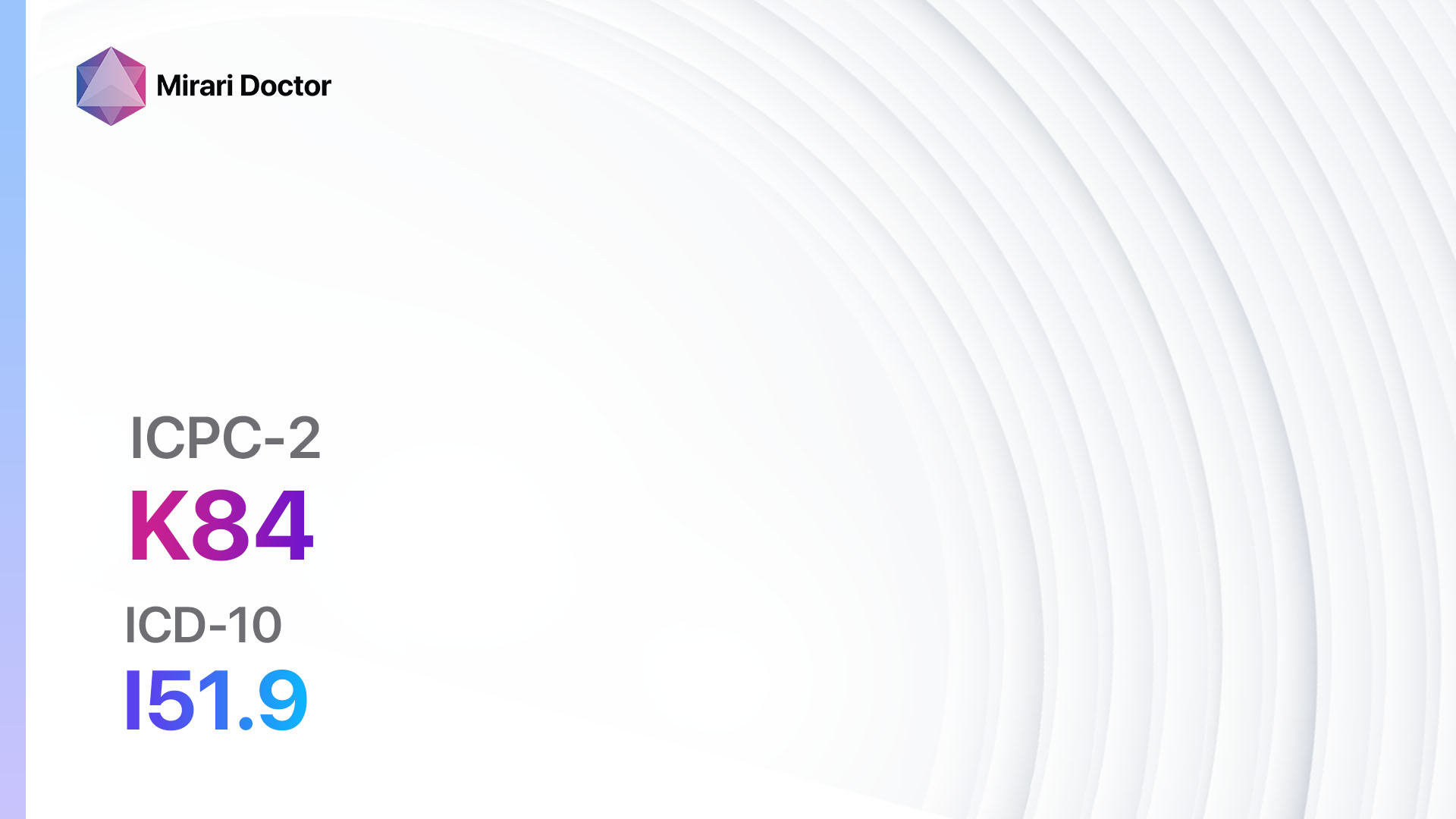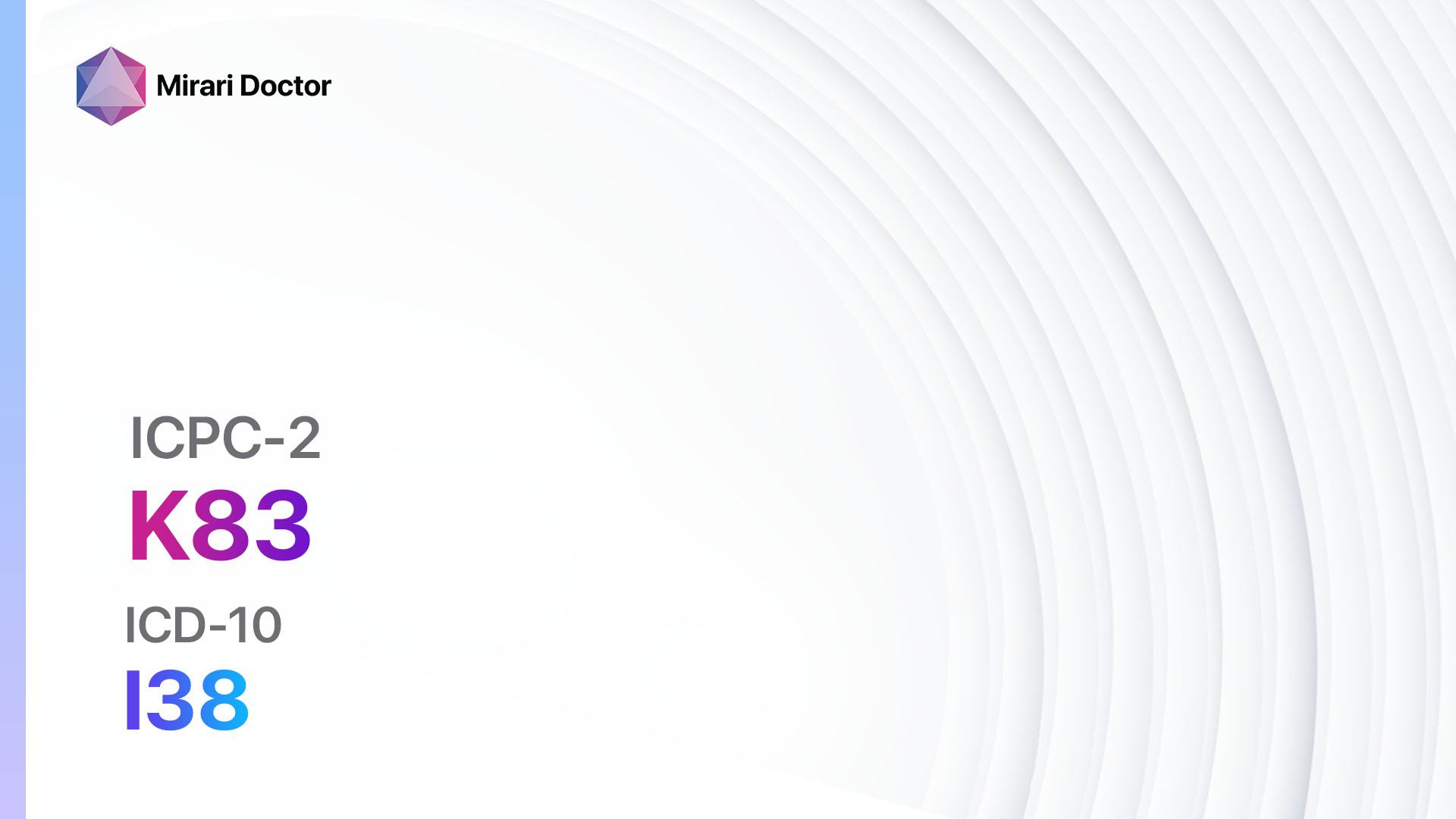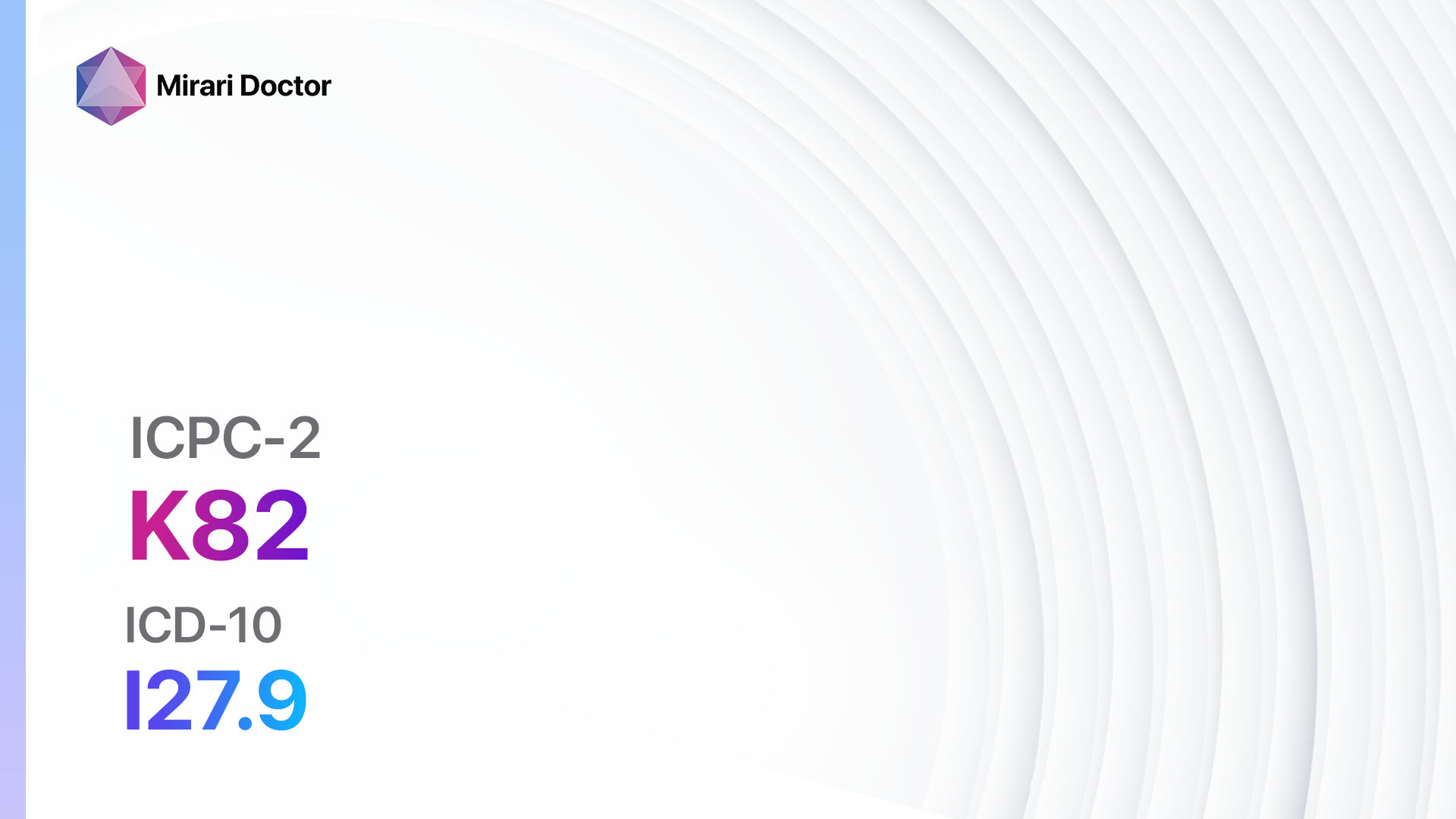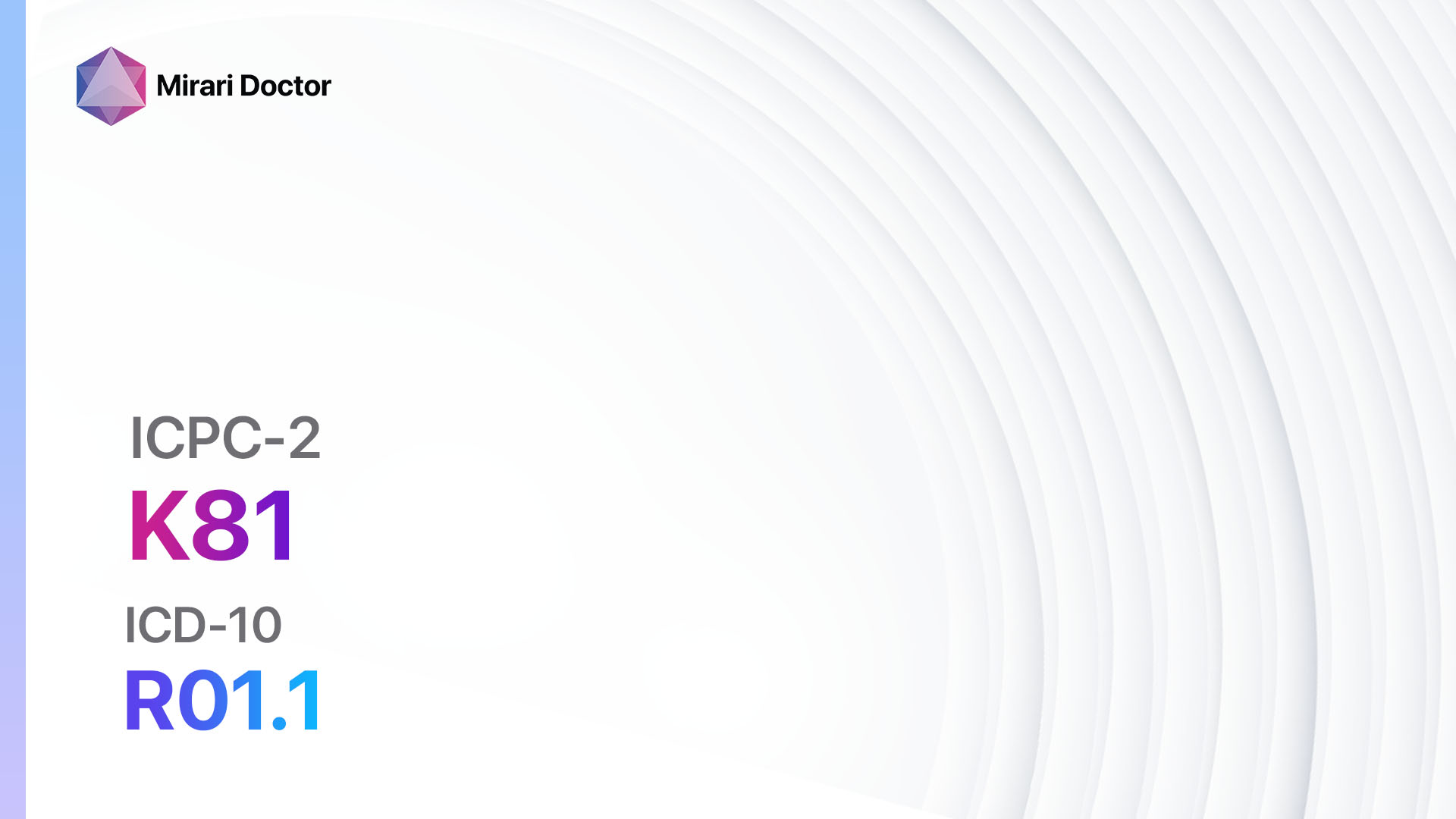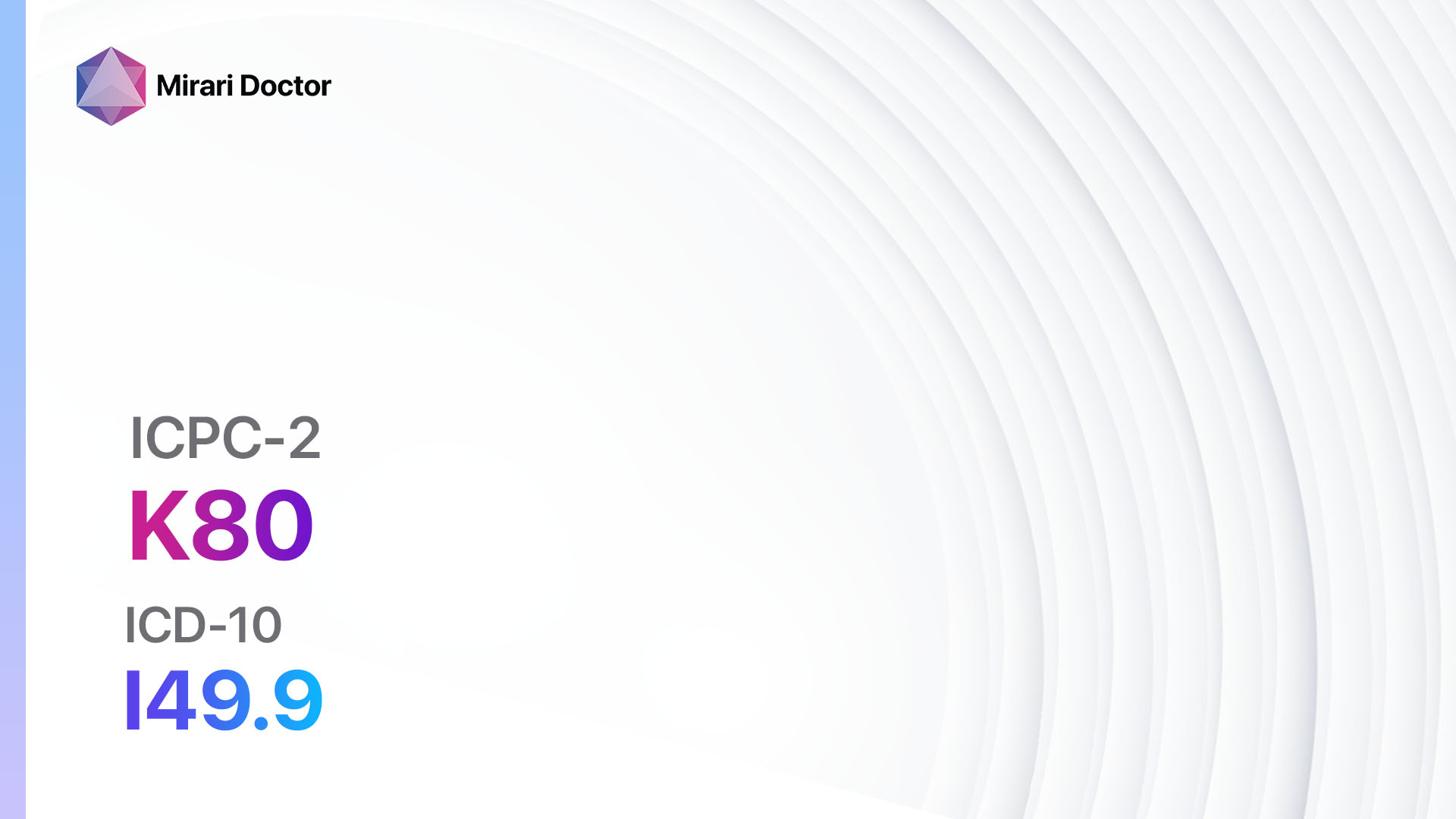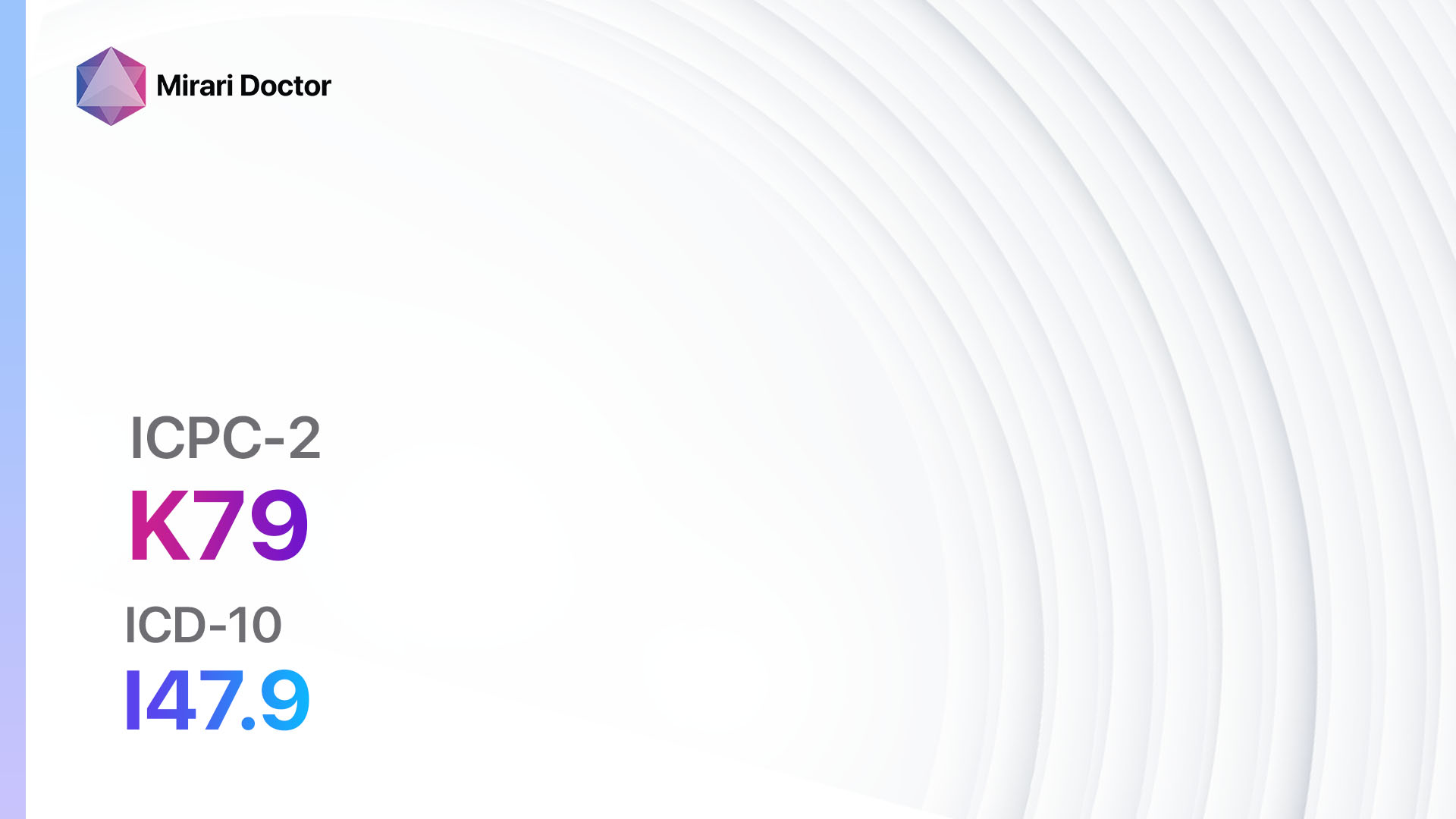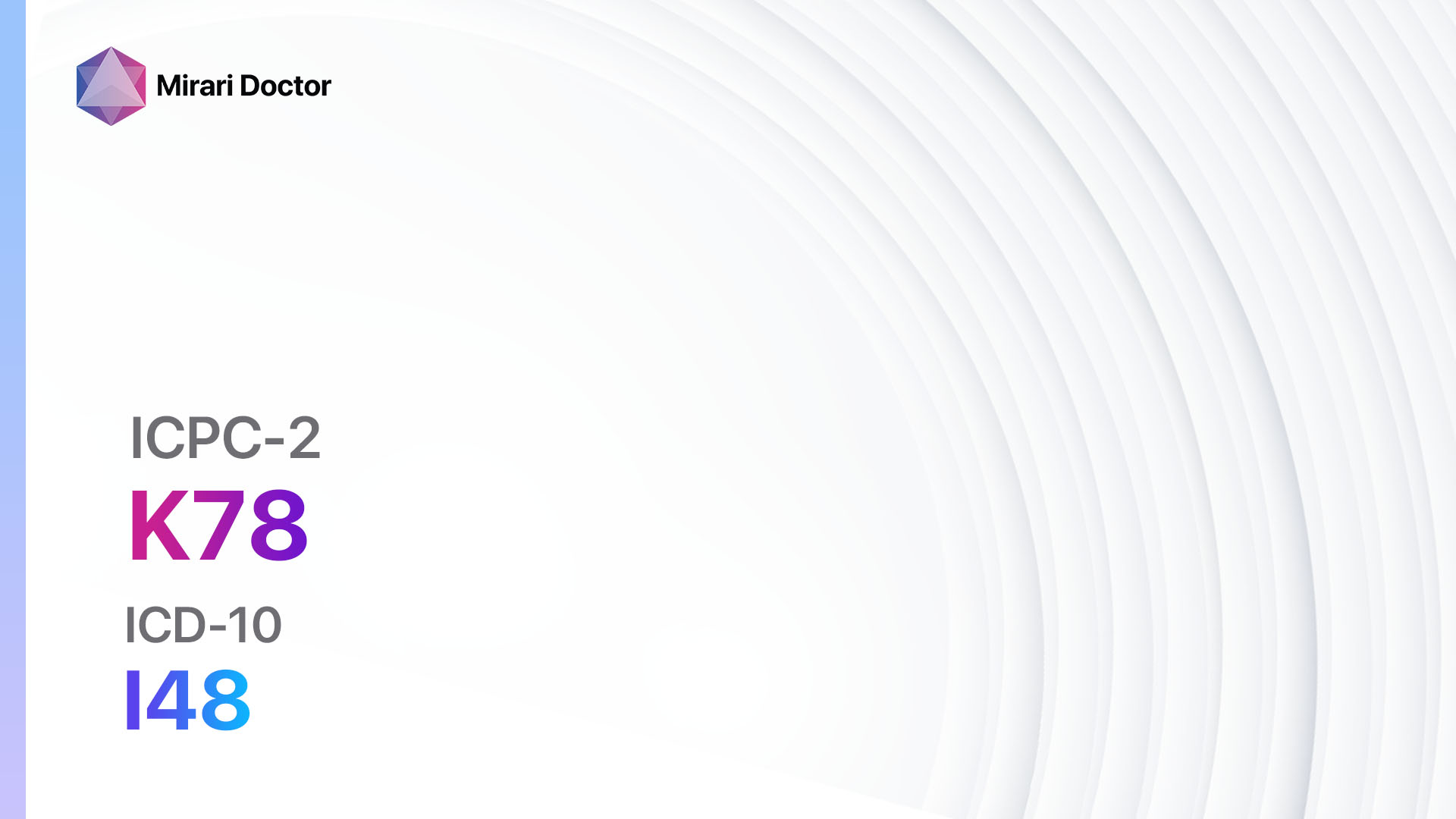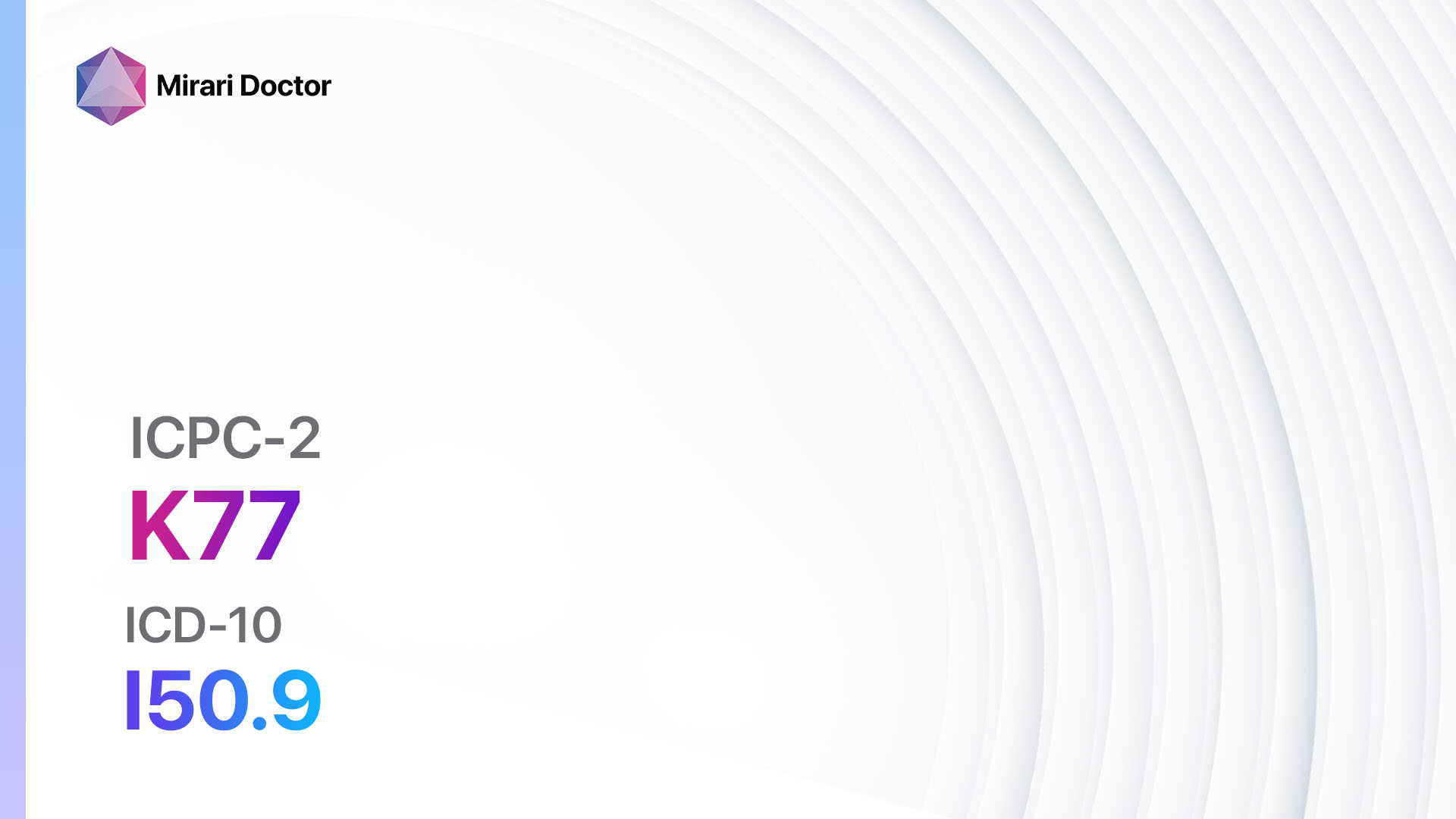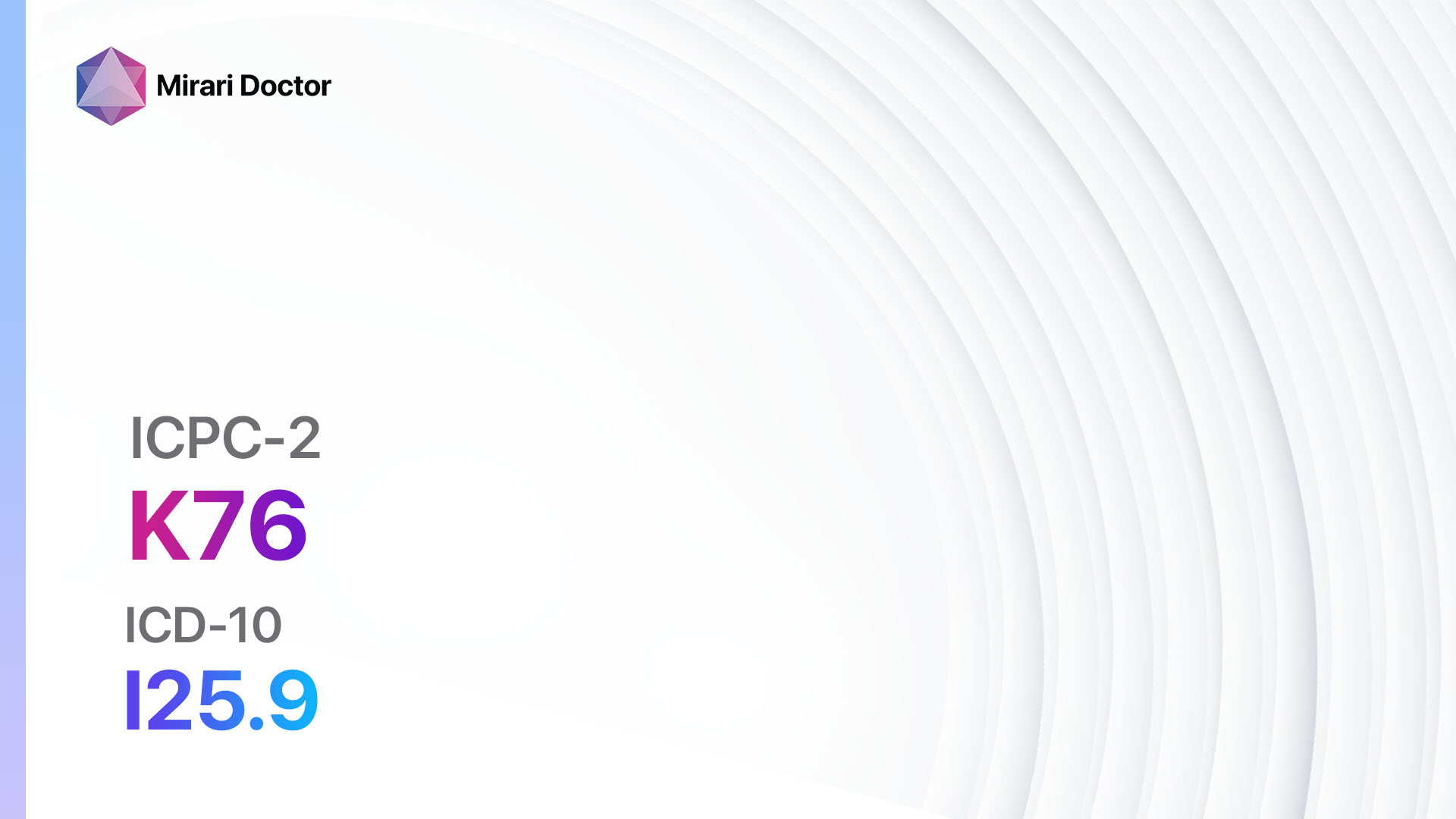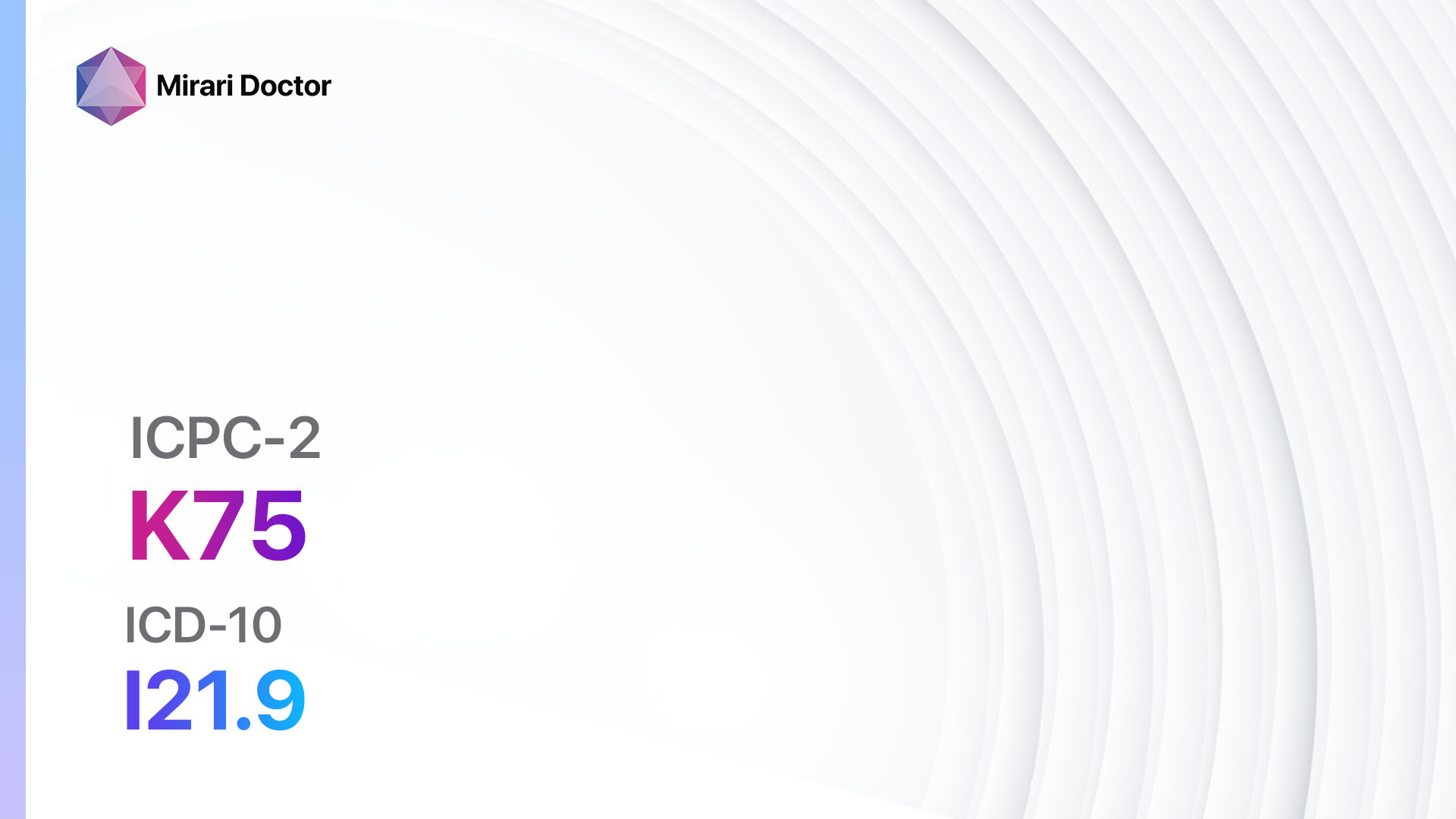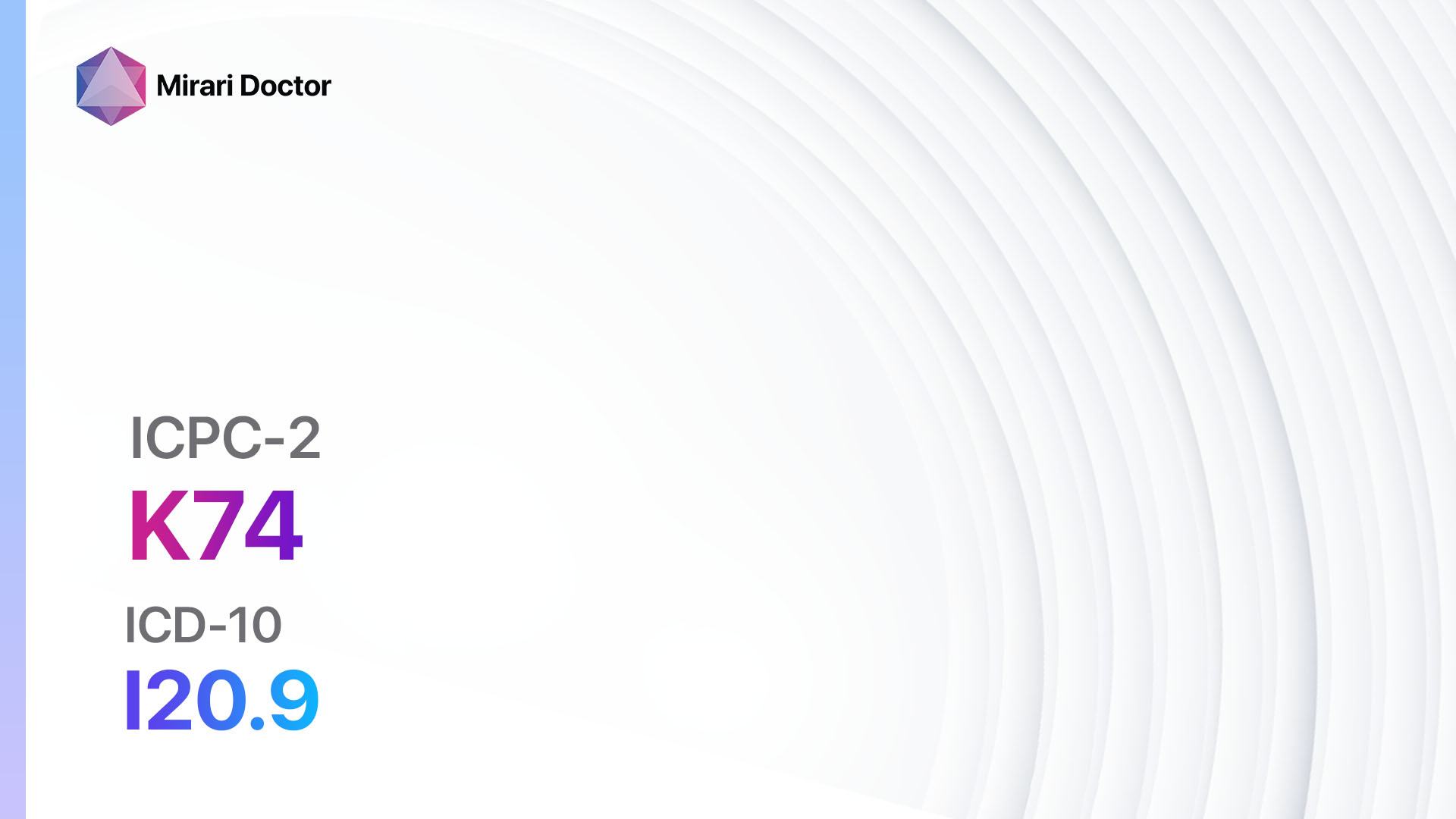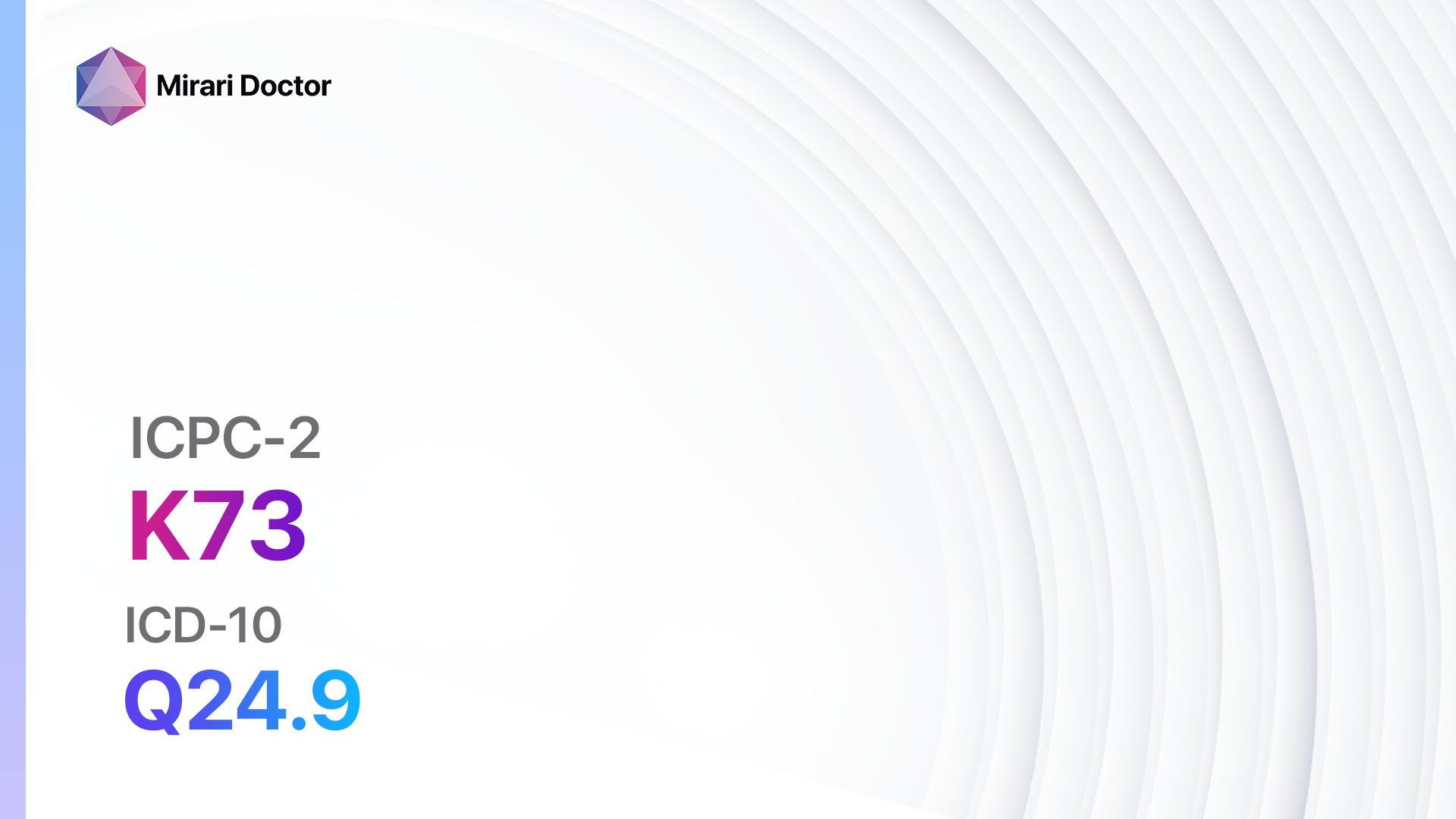
Introduction
Congenital anomaly cardiovascular refers to structural abnormalities of the heart and blood vessels that are present at birth. These anomalies can range from minor defects with no symptoms to severe conditions that require immediate medical intervention. The aim of this guide is to provide a comprehensive overview of the diagnostic steps, possible interventions, and lifestyle modifications for individuals with congenital anomaly cardiovascular.[1][2]
Codes
- ICPC-2 Code: K73 Congenital anomaly cardiovascular
- ICD-10 Code: Q24.9 Congenital malformation of heart, unspecified[3]
Symptoms
- Cyanosis: Bluish discoloration of the skin, lips, and nails due to inadequate oxygenation of the blood.[4]
- Shortness of breath: Difficulty breathing or rapid breathing.[5]
- Fatigue: Feeling tired or exhausted easily.[6]
- Poor growth: Failure to thrive or inadequate weight gain in infants.[7]
- Heart murmur: Abnormal sounds heard during a heartbeat.[8]
- Chest pain: Discomfort or pain in the chest area.[9]
- Fainting or dizziness: Loss of consciousness or feeling lightheaded.[10]
- Rapid heartbeat: Abnormally fast heart rate.
Causes
- Genetic factors: Certain genetic mutations or chromosomal abnormalities can lead to congenital heart defects.
- Environmental factors: Exposure to certain medications, drugs, or infections during pregnancy can increase the risk of congenital anomalies.
- Maternal health conditions: Maternal conditions such as diabetes, obesity, or autoimmune disorders can contribute to the development of congenital heart defects.
Diagnostic Steps
Medical History
- Gather information about the patient’s family history of congenital heart defects or other cardiovascular conditions.
- Ask about any maternal health conditions or exposures during pregnancy.
- Inquire about the presence of symptoms such as cyanosis, shortness of breath, or poor growth.
Physical Examination
- Listen for abnormal heart sounds or murmurs using a stethoscope.
- Check for signs of cyanosis or poor oxygenation.
- Assess the patient’s blood pressure and heart rate.
- Examine the patient’s overall growth and development.
Laboratory Tests
- Complete blood count (CBC): To check for any abnormalities in red and white blood cell counts.
- Electrolyte panel: To assess the levels of electrolytes in the blood.
- Genetic testing: To identify any genetic mutations or chromosomal abnormalities associated with congenital heart defects.
- Blood culture: To rule out any underlying infections.
Diagnostic Imaging
- Chest X-ray: To visualize the structure of the heart and lungs.
- Echocardiogram: An ultrasound of the heart to assess its structure and function.
- Cardiac MRI: Provides detailed images of the heart and blood vessels.
- CT scan: To obtain cross-sectional images of the heart and blood vessels.
Other Tests
- Electrocardiogram (ECG): Records the electrical activity of the heart.
- Cardiac catheterization: Invasive procedure to assess the blood flow and pressure within the heart and blood vessels.
- Exercise stress test: Measures the heart’s response to physical activity.
Follow-up and Patient Education
- Schedule regular follow-up appointments to monitor the patient’s condition and assess the effectiveness of interventions.
- Provide education on the importance of medication adherence, lifestyle modifications, and recognizing symptoms that require immediate medical attention.
- Offer resources and support for patients and their families to cope with the challenges of living with a congenital heart defect.
Possible Interventions
Traditional Interventions
Medications:
Top 5 drugs for Congenital anomaly cardiovascular:
- Diuretics (e.g., Furosemide, Spironolactone):
- Cost: Generic versions can be $3-$50/month.
- Contraindications: Allergy to sulfa drugs, anuria.
- Side effects: Increased urination, electrolyte imbalances.
- Severe side effects: Dehydration, kidney damage.
- Drug interactions: NSAIDs, ACE inhibitors.
- Warning: Regular monitoring of electrolyte levels required.
- Beta-blockers (e.g., Atenolol, Metoprolol):
- Cost: Generic versions are typically <$30/month.
- Contraindications: Severe bradycardia, heart block.
- Side effects: Fatigue, dizziness, low blood pressure.
- Severe side effects: Bronchospasm, heart failure.
- Drug interactions: Calcium channel blockers, insulin.
- Warning: Should not be abruptly stopped.
- Angiotensin-converting enzyme (ACE) inhibitors (e.g., Lisinopril, Enalapril):
- Cost: Generics can be $10-$50/month.
- Contraindications: History of angioedema with ACE inhibitors, bilateral renal artery stenosis.
- Side effects: Cough, dizziness, low blood pressure.
- Severe side effects: Angioedema, hyperkalemia.
- Drug interactions: Potassium supplements, NSAIDs.
- Warning: Monitoring of renal function and potassium levels required.
- Anticoagulants (e.g., Warfarin, Rivaroxaban):
- Cost: Warfarin is inexpensive (<$10/month). Rivaroxaban is $300-$400/month.
- Contraindications: Active bleeding, history of heparin-induced thrombocytopenia.
- Side effects: Increased risk of bleeding.
- Severe side effects: Major bleeding, allergic reactions.
- Drug interactions: NSAIDs, other anticoagulants.
- Warning: Regular monitoring of INR (International Normalized Ratio) required for warfarin.
- Antiarrhythmics (e.g., Amiodarone, Flecainide):
- Cost: Generic versions can be $10-$50/month.
- Contraindications: Severe sinus node dysfunction, second- or third-degree heart block.
- Side effects: Fatigue, dizziness, irregular heart rhythm.
- Severe side effects: Pulmonary toxicity, liver damage.
- Drug interactions: Other antiarrhythmics, grapefruit juice.
- Warning: Regular monitoring of thyroid function and liver enzymes required for amiodarone.
Alternative Drugs:
- Prostaglandin E1 (Alprostadil): Used to keep the ductus arteriosus open in certain congenital heart defects.
- Digoxin: Helps strengthen the heart’s contractions and control heart rate.
- Vasodilators (e.g., Hydralazine, Nitroglycerin): Used to relax blood vessels and reduce the workload on the heart.
- Antibiotics (e.g., Amoxicillin, Azithromycin): Given prophylactically before dental or surgical procedures to prevent infective endocarditis.
- Antifibrinolytics (e.g., Tranexamic acid): Used to prevent excessive bleeding during cardiac surgeries.
Surgical Procedures:
- Cardiac catheterization: Invasive procedure to repair certain congenital heart defects or open up narrowed blood vessels. Cost: $10,000 to $50,000.
- Open-heart surgery: Used for more complex congenital heart defects that cannot be treated with catheter-based interventions. Cost: $100,000 to $500,000.
- Heart transplant: Reserved for severe cases where other interventions have failed. Cost: $1,000,000 to $1,500,000.
Alternative Interventions
- Acupuncture: May help improve blood flow and reduce symptoms. Cost: $60-$120 per session.
- Chelation therapy: Controversial treatment involving the administration of chelating agents to remove heavy metals from the body. Cost: $75-$150 per session.
- Hyperbaric oxygen therapy: Involves breathing pure oxygen in a pressurized chamber to increase oxygen delivery to tissues. Cost: $200-$300 per session.
- Herbal supplements: Some herbs, such as hawthorn and garlic, may have potential benefits for cardiovascular health. Cost: Varies depending on the specific supplement.
- Biofeedback: Helps individuals learn to control their heart rate and blood pressure through relaxation techniques. Cost: $50-$100 per session.
Lifestyle Interventions
- Healthy diet: Emphasize a diet rich in fruits, vegetables, whole grains, lean proteins, and low-fat dairy products. Cost: Varies depending on food choices.
- Regular exercise: Encourage moderate-intensity aerobic exercise for at least 150 minutes per week. Cost: Varies depending on the chosen activity.
- Smoking cessation: Provide resources and support to help individuals quit smoking. Cost: Varies depending on the chosen method (e.g., nicotine replacement therapy, medications, counseling).
- Stress management: Teach stress reduction techniques such as deep breathing, meditation, or yoga. Cost: Varies depending on the chosen method (e.g., self-guided, classes, therapy).
- Weight management: Encourage individuals to achieve and maintain a healthy weight through a combination of diet and exercise. Cost: Varies depending on individual needs and preferences.
It is important to note that the cost ranges provided are approximate and may vary depending on the location and availability of the interventions.
Mirari Cold Plasma Alternative Intervention
Understanding Mirari Cold Plasma
- Safe and Non-Invasive Treatment: Mirari Cold Plasma is a safe and non-invasive treatment option for various skin conditions. It does not require incisions, minimizing the risk of scarring, bleeding, or tissue damage.
- Efficient Extraction of Foreign Bodies: Mirari Cold Plasma facilitates the removal of foreign bodies from the skin by degrading and dissociating organic matter, allowing easier access and extraction.
- Pain Reduction and Comfort: Mirari Cold Plasma has a local analgesic effect, providing pain relief during the treatment, making it more comfortable for the patient.
- Reduced Risk of Infection: Mirari Cold Plasma has antimicrobial properties, effectively killing bacteria and reducing the risk of infection.
- Accelerated Healing and Minimal Scarring: Mirari Cold Plasma stimulates wound healing and tissue regeneration, reducing healing time and minimizing the formation of scars.
Mirari Cold Plasma Prescription
Video instructions for using Mirari Cold Plasma Device – K73 Congenital anomaly cardiovascular (ICD-10:Q24.9)
| Mild | Moderate | Severe |
| Mode setting: 1 (Infection) Location: 5 (Lungs) Morning: 15 minutes, Evening: 15 minutes |
Mode setting: 1 (Infection) Location: 5 (Lungs) Morning: 30 minutes, Lunch: 30 minutes, Evening: 30 minutes |
Mode setting: 1 (Infection) Location: 5 (Lungs) Morning: 30 minutes, Lunch: 30 minutes, Evening: 30 minutes |
| Mode setting: 2 (Wound Healing) Location: 5 (Lungs) Morning: 15 minutes, Evening: 15 minutes |
Mode setting: 2 (Wound Healing) Location: 5 (Lungs) Morning: 30 minutes, Lunch: 30 minutes, Evening: 30 minutes |
Mode setting: 2 (Wound Healing) Location: 5 (Lungs) Morning: 30 minutes, Lunch: 30 minutes, Evening: 30 minutes |
| Mode setting: 7 (Immunotherapy) Location: 1 (Sacrum) Morning: 15 minutes, Evening: 15 minutes |
Mode setting: 7 (Immunotherapy) Location: 1 (Sacrum) Morning: 30 minutes, Lunch: 30 minutes, Evening: 30 minutes |
Mode setting: 7 (Immunotherapy) Location: 1 (Sacrum) Morning: 30 minutes, Lunch: 30 minutes, Evening: 30 minutes |
| Mode setting: 7 (Immunotherapy) Location: 4 (Heart, Bile & Pancreas) Morning: 15 minutes, Evening: 15 minutes |
Mode setting: 7 (Immunotherapy) Location: 4 (Heart, Bile & Pancreas) Morning: 30 minutes, Lunch: 30 minutes, Evening: 30 minutes |
Mode setting:7 (Immunotherapy) Location: 4 (Heart, Bile & Pancreas) Morning: 30 minutes, Lunch: 30 minutes, Evening: 30 minutes |
| Total Morning: 60 minutes approx. $10 USD, Evening: 60 minutes approx. $10 USD |
Total Morning: 120 minutes approx. $20 USD, Lunch: 120 minutes approx. $20 USD, Evening: 120 minutes approx. $20 USD, |
Total Morning: 120 minutes approx. $20 USD, Lunch: 120 minutes approx. $20 USD, Evening: 120 minutes approx. $20 USD, |
| Usual treatment for 7-60 days approx. $140 USD – $1200 USD | Usual treatment for 6-8 weeks approx. $2,520 USD – $3,360 USD |
Usual treatment for 3-6 months approx. $5,400 USD – $10,800 USD
|
 |
|
Use the Mirari Cold Plasma device to treat Congenital anomaly cardiovascular effectively.
WARNING: MIRARI COLD PLASMA IS DESIGNED FOR THE HUMAN BODY WITHOUT ANY ARTIFICIAL OR THIRD PARTY PRODUCTS. USE OF OTHER PRODUCTS IN COMBINATION WITH MIRARI COLD PLASMA MAY CAUSE UNPREDICTABLE EFFECTS, HARM OR INJURY. PLEASE CONSULT A MEDICAL PROFESSIONAL BEFORE COMBINING ANY OTHER PRODUCTS WITH USE OF MIRARI.
Step 1: Cleanse the Skin
- Start by cleaning the affected area of the skin with a gentle cleanser or mild soap and water. Gently pat the area dry with a clean towel.
Step 2: Prepare the Mirari Cold Plasma device
- Ensure that the Mirari Cold Plasma device is fully charged or has fresh batteries as per the manufacturer’s instructions. Make sure the device is clean and in good working condition.
- Switch on the Mirari device using the power button or by following the specific instructions provided with the device.
- Some Mirari devices may have adjustable settings for intensity or treatment duration. Follow the manufacturer’s instructions to select the appropriate settings based on your needs and the recommended guidelines.
Step 3: Apply the Device
- Place the Mirari device in direct contact with the affected area of the skin. Gently glide or hold the device over the skin surface, ensuring even coverage of the area experiencing.
- Slowly move the Mirari device in a circular motion or follow a specific pattern as indicated in the user manual. This helps ensure thorough treatment coverage.
Step 4: Monitor and Assess:
- Keep track of your progress and evaluate the effectiveness of the Mirari device in managing your Congenital anomaly cardiovascular. If you have any concerns or notice any adverse reactions, consult with your health care professional.
Note
This guide is for informational purposes only and should not replace the advice of a medical professional. Always consult with your healthcare provider or a qualified medical professional for personal advice, diagnosis, or treatment. Do not solely rely on the information presented here for decisions about your health. Use of this information is at your own risk. The authors of this guide, nor any associated entities or platforms, are not responsible for any potential adverse effects or outcomes based on the content.
Mirari Cold Plasma System Disclaimer
- Purpose: The Mirari Cold Plasma System is a Class 2 medical device designed for use by trained healthcare professionals. It is registered for use in Thailand and Vietnam. It is not intended for use outside of these locations.
- Informational Use: The content and information provided with the device are for educational and informational purposes only. They are not a substitute for professional medical advice or care.
- Variable Outcomes: While the device is approved for specific uses, individual outcomes can differ. We do not assert or guarantee specific medical outcomes.
- Consultation: Prior to utilizing the device or making decisions based on its content, it is essential to consult with a Certified Mirari Tele-Therapist and your medical healthcare provider regarding specific protocols.
- Liability: By using this device, users are acknowledging and accepting all potential risks. Neither the manufacturer nor the distributor will be held accountable for any adverse reactions, injuries, or damages stemming from its use.
- Geographical Availability: This device has received approval for designated purposes by the Thai and Vietnam FDA. As of now, outside of Thailand and Vietnam, the Mirari Cold Plasma System is not available for purchase or use.
References
- Marelli, A. J., Ionescu-Ittu, R., Mackie, A. S., Guo, L., Dendukuri, N., & Kaouache, M. (2014). Lifetime prevalence of congenital heart disease in the general population from 2000 to 2010. Circulation, 130(9), 749-756.
- Hoffman, J. I., & Kaplan, S. (2002). The incidence of congenital heart disease. Journal of the American College of Cardiology, 39(12), 1890-1900.
- World Health Organization. (2016). International Statistical Classification of Diseases and Related Health Problems (ICD-10). Geneva: World Health Organization.
- Gatzoulis, M. A., Webb, G. D., & Daubeney, P. E. (Eds.). (2011). Diagnosis and management of adult congenital heart disease. Elsevier Health Sciences.
- Warnes, C. A., Williams, R. G., Bashore, T. M., Child, J. S., Connolly, H. M., Dearani, J. A., … & Webb, G. D. (2008). ACC/AHA 2008 guidelines for the management of adults with congenital heart disease: a report of the American College of Cardiology/American Heart Association Task Force on Practice Guidelines (writing committee to develop guidelines on the management of adults with congenital heart disease). Circulation, 118(23), e714-e833.
- Dearani, J. A., Connolly, H. M., Martinez, R., Fontecilla, N., & Webb, G. D. (2007). Caring for adults with congenital cardiac disease: successes and challenges for 2007 and beyond. Current Opinion in Pediatrics, 19(5), 607-613.
- Oster, M. E., Lee, K. A., Honein, M. A., Riehle-Colarusso, T., Shin, M., & Correa, A. (2013). Temporal trends in survival among infants with critical congenital heart defects. Pediatrics, 131(5), e1502-e1508.
- Fyler, D. C. (1992). Report of the New England Regional Infant Cardiac Program. Pediatrics, 90(4), 553-556.
- Brickner, M. E., Hillis, L. D., & Lange, R. A. (2000). Congenital heart disease in adults. New England Journal of Medicine, 342(4), 256-263.
- Silka, M. J., Hardy, B. G., Menashe, V. D., & Morris, C. D. (1998). A population-based prospective evaluation of risk of sudden cardiac death after operation for common congenital heart defects. Journal of the American College of Cardiology, 32(1), 245-251.
Related articles
Made in USA


